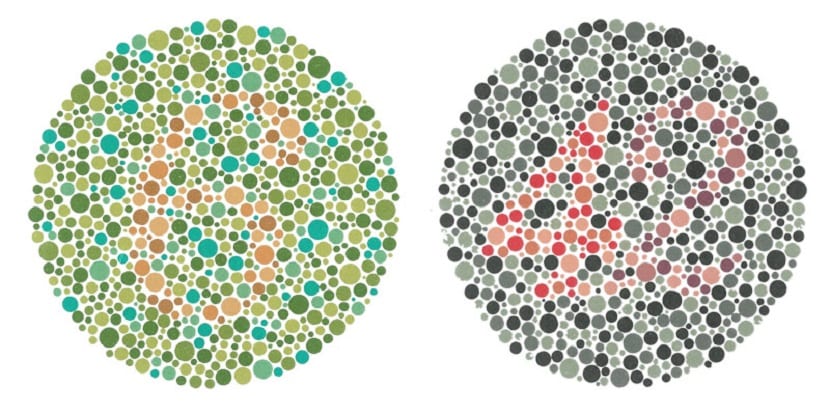
Detecting color blindness in children early is essential, in this way, you can work as soon as possible and thus avoid difficulties in learninge. Color blindness is a vision problem and that prevents the affected person from distinguishing colors in a normal way. This disorder, also called "color vision deficiency", can affect to a greater or lesser extent depending on the case.
However, in childhood it can be the cause of school failure since it is not always easy to determine that this problem exists. For this reason, it is very important that you observe the behavior of your children, their way of playing, using colors, describing them and above all, listening carefully to be able to detect any problem in time.
What Causes Color Blindness?
Color blindness It is caused by an alteration in the genes, specifically in the X chromosome, therefore, it affects men to a greater extent. This visual disorder prevents distinguishing certain colors in the way that other people perceive them. Generally, it is the red and green colors that affect a greater number of color blind people, although it is also possible that there are people with problems distinguishing yellow or blue.
Although it is a problem that can complicate the life of those who suffer from it in many ways, this alteration is not serious in the vast majority of cases, so that the affected person can lead a completely normal life. However, there is a very low percentage of children who develop an extreme form of color blindness. This is the so-called "achromatopsia" that affects one in 30.000 children.
This disease is characterized by the impossibility of distinguishing any color, that is, the affected person sees everything in black and white. In addition, one of the consequences of this pathology is the decrease in visual acuity, especially in situations where there is a lot of light.
Tests to detect color blindness in children

Although color blindness in most cases is not serious, it is very important to detect the disorder early. In this way, learning problems can be avoided and both educators and parents will be able to help the child in their school stage.
If you think your child may be color blind, you can use any of the following home tests to check. However, it is important that you go to your pediatrician to refer the child to the specialist. The ophthalmologist will perform a simple test to determine whether or not this problem exists.
Home tests for color perception deficiency
You will only need four cards of different colors, blue, red, green and yellow. Cut each card into 4 equal parts, that is, you will get 4 squares of each color. The test consists of ask the child to group the squares by color. If you have trouble distinguishing between them, especially red and green, it may be a sign of color blindness.
If the child is older and already knows the name of the colors, you can ask him to draw several pictures. For each of them you will have to use a color and then tell you what color he has used in each one. If you distinguish them all correctly, it is a clear sign that you do not suffer from this disorder.

Fruits and vegetables will help you detect problems in the perception of colors. Use foods that are red and green, such as a bell pepper of each color. If the child does not know the name of the colors, the first step will be to show them and then, you can ask him to name the corresponding color himself. If you get the colors confused, the small child is likely to be color blind.
These simple tests will help you see if your child may be color blind. However, it is recommended that you go to the pediatrician's office at the slightest doubt. Although this is not a serious problem, it is important to be aware of it as soon as possible.